#yukon quest champion
Explore tagged Tumblr posts
Photo
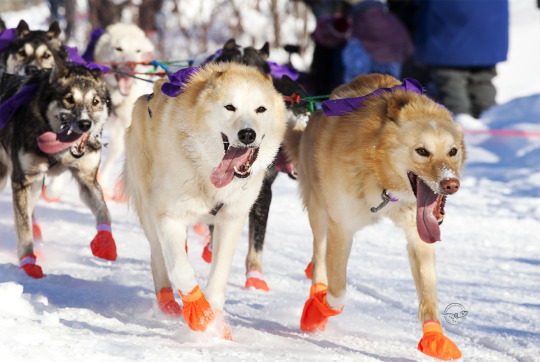
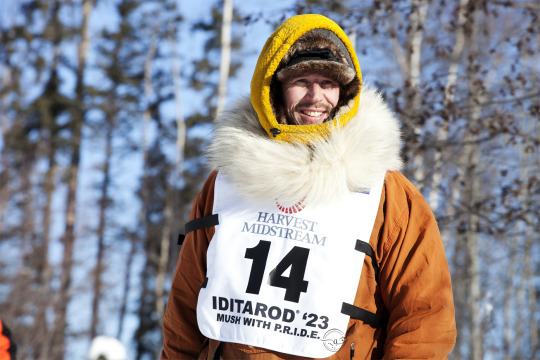

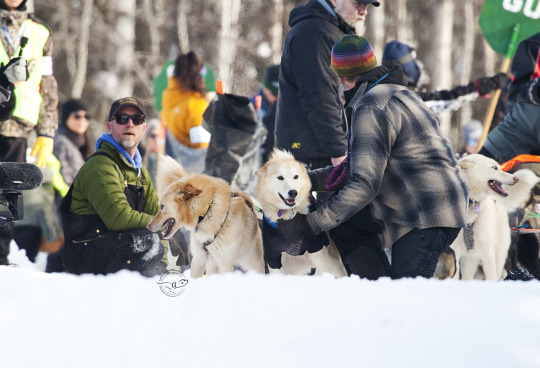
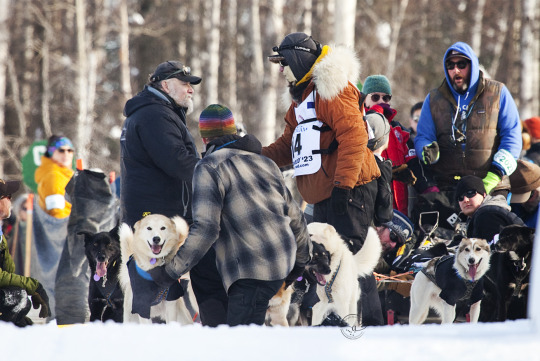
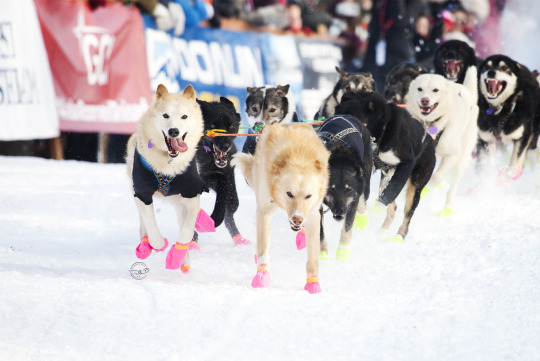
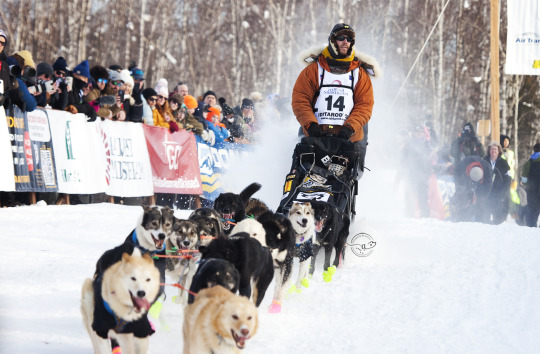
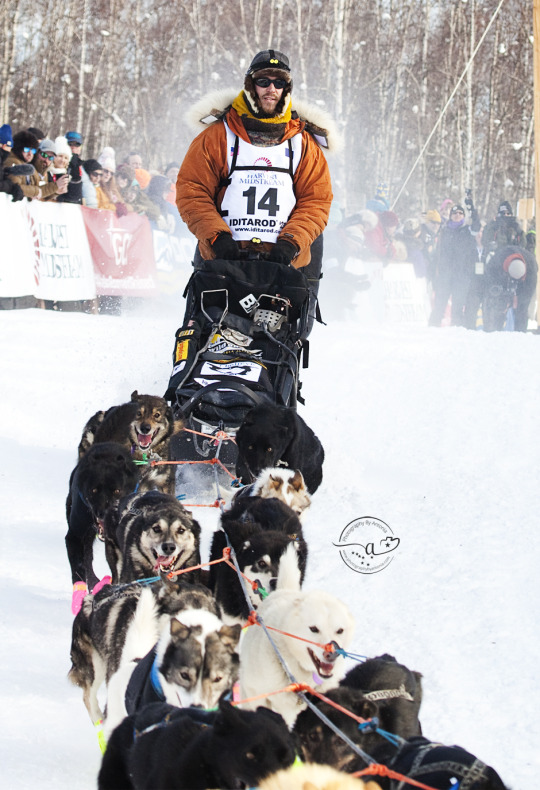
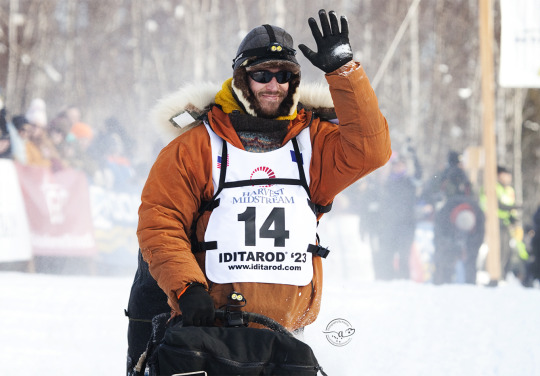
Reigning champion Brent Sass and team at the Ceremonial and Restart of Iditarod 51. Sass would scratch on the Yukon River with a medical emergency (illness plus infection in his mouth presumably due to three cracked teeth he was putting off getting looked at). The surprise departure of the champion team opened the door WIDE open for a multitude of teams to take the top spot.
#Brent Sass#iditarod#iditarod 51#iditarod 2023#iditarod51#iditarod2023#mushing#dog mushing#dog sledding#alaskan husky#huskies#mush love dogs#just mush#yukon quest champion#iditarod champion#champion#don't ignore dental concerns#mouth health is incredibly important#alaska#alaska sports#dog sports#winter sports#sports photography#sport photography#dog photography#yes i took these pictures#photography by antonia
1 note
·
View note
Text
instagram
Meet Bill Cotter #themusher and his teams for our #winter #sled #tour. He has raced in over 150 sled races, became the Yukon Quest Champion in 1987, and came in the3rd place in the Iditarod in 1995. Also, he has won 4 humanitarian awards for the care and treatment of his dogs. #nenana #fairbanks #alaska #ak #usa #mushing #billcotterkennel #wild #alaskan #adventure #travel #travelling #traveling
0 notes
Photo




The hard working dogs of Wild & Free Mushing (2020, 2019 & 2015 Yukon Quest Champions, 2020 Iditarod 4th Place) having “sleepovers” in musher Brent Sass’s cabin.
#canine#dog#dogblr#dogsledding#related to my last post about how letting sled dogs inside#is apparently frowned upon by old school people#good thing the old school people don't really win anymore huh#also brent has received awards for his good husbandry#can we all take a page out of Libby Riddles book and treat our dogs well? thanks#i also appreciate that on his website brent puts the accolades of the kennel under team#where the dogs are featured and not under his own page#edit: also i love that first picture bc the BLUR of happy tails
76 notes
·
View notes
Text
Iditapod: Rainy Pass, Race Rookies, and Rohn Axe-Throwing
[sound of an axe hitting wood]
[men cheering]
Discordant voices: Ayyy! That was it! That was it hitting the bullseye
[theme music plays]
Casey Groves: Welcome to the Iditapod! It’s a podcast about dog mushing and the Iditarod, and… axe throwing? We’ll get to that in a few minutes. But first, here’s a word from our sponsor
[ad plays]
CG: Well, my friends, since the last time we talked, the more than four dozen sled dogs teams competing in the 2019 Iditarod have mushed, or are mushing, into the mountainous Alaska range. When mushers say these are the most technical sections of the trail, they mean it is an area where mistakes can be especially dangerous, and expert sled driving is of the utmost importance.
So, the Rainy Pass checkpoint on the frozen alpine Puntilla Lake, is a spot many mushers stop to prepare for the often tough trail ahead. But, not last years second place finisher Nic Petit, who stayed only a few minutes, long enough for race officials and veterinarians to check out his team and gear. In fact, looking at Petit’s checkpoint times on Iditarod.com, he hasn’t stayed more than a few minutes at any checkpoint in the face, except for Rohn, where he stayed a whopping 20 minutes. Instead, Petit has opted, as mushers will do sometimes, to avoid the hubbub of the checkpoints and camp his team out along the trail. They pick up straw, they pick up supplies from their drops bags, and they take that along with them down the trail and just do their own thing. That’s why, after having the lead earlier in the race, severals teams passed Petit on the way from Rohn down to Nikolai. That is a village on the upper Kuskokwim River, roughly 250 miles into the 1000 mile race.
While Petit rested from Rohn to Nikolai, the race GPS tracker shows the defending champ, the Norwegian by way of Willow, Joar Leifseth Ulsom, passed Petit’s team, as did several others, including Bethel’s Pete Kaiser, Montanan Jessie Royer, and Two River’s musher Aliy Zirkle. Ulsom was the first to arrive in Nikolai a little after 6:30 Tuesday morning. And, remember, the race just started Sunday in Willow with the race clock ticking, at the restart, so they’re covering a lot of ground here very quickly, as they do. And we’re looking forward to hearing more about how it went for the team’s runs from Rainy Pass to Rohn and Nikolai. While the race reached Nikolai Tuesday morning, we’re going to go back to Rainy Pass, where as Iditarod mushers make their way over the Alaska range, they find the last checkpoint for supplies and a rest at the Rainy Pass Lodge on Puntilla Lake. As Alaska Public Media’s Zachariah Hughes reports, it’s a good place to pause, maybe reflect, and definitely to prepare before heading towards the most technical sections of the trail.
[sounds of dogs and supplies moving]
Zachariah Hughes: Sarah Stokey pulls onto Puntilla Lake with a team of dogs that has been gradually climbing the Alaska Range.
Sarah Stokey: Hi
Unknown Voices: Bib number?
SS: 52
Voice 1: Perfect. We’re going to give you your bags here
Voice 2: Are you going to stay or are you going to rest? SS: I’m going to stay
V1: She’s gonna stay, ok
ZH: Stokey grabs three heavy drop bags full of supplies, and parks her dogs for a rest. She’s in good company, except for Nic Petit and Pete Kaiser, who flew through mid-morning, almost all of the teams at the front of the pack are taking a break. Checkpoint at the Rainy Point Lodge has a festive atmosphere. Frozen lake is covered with planes and helicopters that bring tourists for day trips, the rustic wooden building is ringed with picturesque mountain peaks. It’s not where Matt Hall would have chosen to stop, but he wanted a veterinarian to check out a dog’s toenail problem.
Matt Hall: Little noisy, but they rest good.
ZH: Hall came off the Yukon Quest a few weeks ago, and likes camping out with his team beyond the hubbub of checkpoints, but he knows that enough teams are likely to stop here that he can keep toward the front of the pack.
MH: It’s definitely an advantage, being toward the front early on, just because of that, you know, you get 20,000 dog feet over it, and 50 sleds, and it starts getting softer and softer, then as the heat of the day comes on to.
ZH: Hard packed, smooth trail that gets punchy and pulverized after heavy traffic is slower and more effort for the dogs. In the cool, early hours before many mushers had gone over, Linwood Fiedler says the trail heading up toward the Rainy Pass checkpoint was something to behold.
LF: I don’t think I’ve ever seen it better. It’s certainly one of the best trails ever. Yeah, I mean, it’s the Iditarod trail, but boy it’s pretty good shape.
ZH: Fiedler also wants to take advantage of the midday warmth, rest his dogs while the bright sun and relative warmth soften the trail.
LF: It’s just gonna get warmer and warmer and warmer, when it’s like this, 5 degrees, going up makes a huge difference. I mean, it’s just, you can just see that team kind of wilt [laughs] I mean, they’re like a car with no antifreeze in the radiator
ZH: After the lodge, the route keeps going up, until it hits Rainy Pass itself, it weaves back and forth, over a river, enveloped by steep mountain peaks on both sides. This year, trail crews had to build 20 bridge crossings over sections of open water. From Puntilla Lake, it’s 35 miles up and through the pass to the Rohn checkpoint. It’s a kind of dog driving that requires some finesse.
Jessie Royer: I’d have to say, my team is pretty controlled anyways.
ZH: Jessie Royer is in a good mood as she straws her dogs. It’s not just the pass that’s challenging, she says, what follows is the drops and turns of the gorge, and the bumps of the tunnels. Royer’s approach is to rest and charge her dogs, before embarking on the hours over the pass, but keep them moving, winding down their power, until all the technical stretches are behind them.
JR: I don’t stop until we get out of it all, so I do it all in one run. Cause otherwise, if you don’t if you stop in Rohn, you’re leaving with a fresh team right away on the buffalo tunnels, which is even worse. Buffalo tunnels is always worse than the gorge.
ZH: It’s a stage in the race when there’s strategy not just in reading the trail, but in using a dog teams relative restedness or fatigue to help navigate perilous terrain. From the Rainy Pass Lodge on the Iditarod Trail, I’m Zachariah Hughes.
Casey Groves: So between Rainy Pass and Nikolai, is the checkpoint of Rohn. To get there, the teams navigate some pretty treacherous sections, reaching the races highest elevation of 3,160 feet. I mean, it’s a mountain pass. You’re going on some pretty narrow trail, and there’s mountains and ravines, there are twists and turns, ups and downs, there’s some mushing on the edge of the ravine - it’s intense. If you want to get a look at it, I encourage you to google “Jeff King Dalzell Gorge”. The first video that should come up is from a very low snow year in 2014. Those sections of trail destroyed some sleds and destroyed some mushers dreams of reaching Nome that year. I first saw those sections of trail that same year, in 2014, from the safety of a helicopter. That was my rookie year on the Iditarod. But as a rookie, in the race, it must be daunting to hear the stories and then finally get up into the pass and see what you got yourself into. And, Jeff King’s a four time champion. He’s very experienced musher. He’s run the Iditarod as much as anybody competing in the race these days. But, in addition to the really competitive slate of mushers in this year’s Iditarod, which includes five past champions (King, one of them), nearly one in five Iditarod mushers this year is brand new to the race. As Ben Matheson reports, the ten rookies each set out on the trail with a deep range of skills and experiences.
Ben Matheson: 21 year old Martin Apayauq Reitan is coming off of Yukon Quest, in which he took home Rookie of the Year honors. But, he had a tough time managing his sleep during the race, something he wants to improve upon in his second 1000 mile race.
Martin Apayauq Reitan: We need to have a good time, and we’ll see if I’ll be able to race or if I’ll oversleep again, and then, you know, I’ll have to adjust my expectations, but I’ll try my best and have fun.
BM: Reitan lives on the north slope of Kaktovik, where, among other things, he guides polar bear viewing expeditions. After the race, he’ll skip the jet and instead mush his team north, to Kotzebue, where his dad will run the Kobuk 440. After that, it’s hundreds of miles north to and to the east, to Kaktovik, the same epic trip he made two years ago with his dad. Mushing is also a family affair for Jessica Klejka, who grew up the oldest of 7 kids running dogs in Bethel. Her passion for mushing also overlaps with her professional life - she’s a veterinarian. But Klejka says her professional knowledge can cause her to overthink things with her dogs.
Jessica Klejka: And so I see something happen and, you know, like if I toss a dog a piece of fish and he doesn’t eat it right away, I start going okay wait, what’s going on, why doesn’t he want to eat the fish. And I start smelling the fish, like is it okay, and - but for the most part I think it’s very advantageous because I get a lot of calls from mushers the last few weeks before Iditarod, asking a lot of questions, and it’s kind of fun.
BM: For more than two decades, Ed Hopkins from Tagish Yukon Territory, has been running the Yukon Quest, notching several top five finishes. But, after watching his wife, Michelle Phillips, running the Iditarod in recent years, he says the Iditarod temptation became hard to ignore.
Ed Hopkins: Actually, you get the itch, and I got the itch
BM: His team has already completed a 1000 mile race this year. Phillips ran the team to a 4th place finish in the Quest last months. Hopkins says the race-hardened dogs know more about the trail than he does.
EH: I’m a rookie in a lot of senses, like I don’t know some of the little hidden things that are out there that give advantage to a lot of other people, so, I’m just gonna go and do my own thing pretty much.
BM: Norwegian Niklas Wikstrand has worked with Pete Kaiser in Bethel for a few years, and gotten his race experience in brutal, Kuskokwim river conditions, and he’s been on a specific schedule to get the dogs the right racing experience.
Niklas Wikstrand: Going a little slower, rest enough, and that’s our teams main goal, to rest and run quite conservative, and make sure that as many dogs get to Nome, and just keeping the dogs happy and healthy.
BM: As the rookies navigate the races most technical and steep sections in the first couple days in the race, they’ll be one step closer to joining the elite club of Iditarod finishers. I’m Ben Matheson, in Anchorage.
Casey Groves: These rookie standings are definitely subject to change as teams leapfrog each other here in the race. At least check, Ed Hopkins was leading the rookies in 32nd place; then Richie Beattie in 34th; Sebastien Dos Santos Borges in 37th. There’s Jessica Klejka, who we just heard from, in 38th place; Niklas Wikstrand in 41st, Blair Braverman in 42nd, Ryan Santiago in 46th, Alison Lifka in 47th, Martin Apayauq Reitan in 48th, and bringing up the rear, in 52nd place, Victoria Hardwick.
At least check, all the rookies in this years race still yet to reach the checkpoint of Rohn, and I want to mention Rohn real quick. It’s not really a community or anything, they’ve listed it at population zero, it’s basically just a cabin or a roadhouse they call it, and definitely the population swells when it’s an Iditarod checkpoint. They’ve got veterinarians there to checked the dogs, they’ve got race officials - and of course, they’ve got mushers coming in. And, different Iditarod checkpoints have totally different flavors. Some are hectic, full of visitors and volunteers; others are literal ghost towns, nestled quite deliberately in the middle of the wilderness.
The Rohn checkpoint is the latter, with hardly any amenities or distractions. The volunteer staffers have to find ways to amuse themselves, in the lulls, when there are no mushers - it might be a little boring, they’re trying to entertain themselves. This year, as Alaska Public Media’s Zachariah Hughes found out, they are throwing axes.
[sound of an axe hitting wood, men cheering]
Men’s voices: Aha! That was it? That was the bullseye, dead center, that’s perfect!
Zachariah Hughes: Like, what’s the right technique for doing it? Like, when you’re giving someone an introductory lesson, how do you explain it?
Man’s Voice [Unknown]: Uh, normally I ask, you know, right or left handed. If you’re right handed, you want your left hand on the bottom, right hand on top, you know I try to keep everything in a straight line and use your whole body.
ZH: What are you guys doing right now? MV: Axe throwing? Yeah, we’re axe throwing
[sound of an axe, throwing]
MV: [loudly] Yeah! That was it, that was perfect
ZH: The Rohn checkpoint is mostly just a cabin, it’s in a clearing in a pretty wooded area, just after the Dalzell gorge, near a river, they’ve got some arctic ovens set up, some snow machines, there’s an outhouse, but - mostly it’s a one room cabin from 1910 that the Parks Service maintains. Nowadays, it’s a shelter cabin.
Woman’s Voice: We find something to do, we tell our stories
ZH: Throw weapons
WV: Well, we don’t allow guns out when the mushers are here, but pre and post race we do a little target shooting. But, I asked Mark to bring an axe, because I’ve always wanted to do this. I’ve never done this before.
ZH: Oh, and you guys knew each other before this?
WV: I met him last summer at the lumberjack show.
ZH: Mm.
[sound of axe thudding]
ZH: The volunteers here have to be a little bit more hardy than at other places, because they’re left out here mostly unsupported, it’s basically camping.
WV: Well, there’s nobody lives here year round, so we all come out for Iditarod, because we like dogs, we like going to remote places in Alaska, meeting people from all over, and it’s a satisfaction of helping people get down the trail, whether it’s snow machining, or walking, or mushing dogs, so it’s a good camaraderie feeling of Alaska.
ZH: Do you like throwing the axe? WV: Yeah, it feels good. You should give it a try.
[sound of axe thudding, woman yells “nice!”]
Man’s Voice: And when you release, you want kind of to release high so the axe carries down into the target, because it’s heavy
ZH: Do you guys always do this every year, out here? MV: This is my first year, so no, I don’t think so? But maybe from now on [laughs] I got started in college as a collegiate sport, so it’s called the woodsmen’s team in college, and so I competed collegiately. Me personally, I ended up doing well enough at the end of my four years, I was able to go pro, and then I competed professionally and also did lumberjack shows.
ZH: Is that what brought you up to Alaska?
MV: Yeah, I did a show for Great Alaska Lumberjack Show in Ketchikan Alaska, I did that for four years, one of my good friends, Tina Sheer, owns a show in May, and she’s the one that did a show at the Alaska State Fair, and she’s actually worked the Rohn checkpoint too, in the past.
[axe thuds]
Casey Groves: I still have a lot of questions about Zach throwing axes. And, that’s a contrived segue to today’s listener question! It’s actually two related questions in Aaron Knight’s language arts classes out in Unalaska
Alyssa; My name’s Alyssa, I’m also from Unalaska, and my groupmates are Michelle, Natalie, and Alyssa-Marie, and our question is have any of the mushers got hurt, and did they have to stop participating in the race?
Aaron: Hi, my name is Aaron, my groups are Matius and Zach, what happens if the dogs got hurt?
CG: Thanks for listening, and thanks for the great questions everybody. So, what happens when there are injuries on the trail? Here’s our trail reporter, Zachariah Hughes, with the answer.
Zachariah Hughes: If the dog’s hurt, his or her musher will leave it at a checkpoint. The veterinarians take care of it and the Iditarod takes over, they’ll take groups of dogs who are hurt, or dropped, or sick, and move them back to Anchorage, or somewhere where a handler or somebody who knows the musher picks up the dog and takes care of it for a while. Mushers, unless they’re really really hurt, will keep going. One time, Aaron Burmeister broke his knee coming down the Dalzell Gorge, and he finished the Iditarod hundreds of miles later, limping over the finish line, but he made it. So, other times mushers will fall of their sleds and crack ribs and maybe withdraw or maybe keep going, they are pretty tough and it’s really up to them, if they’re hurt, if they want to keep trying to finish the race.
CG: Thanks for getting that answer to us Zach, and as always I want to remind the listeners that you can send your questions to [email protected]. The best way to do that and maybe get on the podcast is to open up your smartphone, find that voice memo app, record your question in your own voice, and send that to [email protected] and that’s the best way to get your answer. Well, everybody that’s all the time we have for today, our theme music is by the band Sassafrassh, I’m your host Casey Groves, and until next time - happy tails.
Linwood Fiedler: You just gotta be ready to be game on and not be sleepy [laughs] so.
ZH: How are you gonna do that?
LF: How am I gonna do that? I’m gonna try and take an hour nap here. [laughs]
ZH: Out here, like in the sled bag?
LF: You know, I may lay down with them, or I guess there’s a little cabin we can get in if we want.
ZH: But you don’t have like an exoskeleton for the gorge?
LF: [laughs] No. My head hits a tree, is what’s gonna happen.
ZH: Well I hope you make it out in one piece, thanks a lot man, take care
4 notes
·
View notes
Note
For the DnD ask meme, I’d like to ask about number 4 and number 8 please!
4. Your current campaign:I’m in a few campaigns, but my most consistently-played game is Alluvia, run by my partner M and played by @dlnsctt, @livelaughlegendlore, and myself! It was initially an Americana/frontier-style adventure, but in 3 years and 20 levels, it has become something far greater. We’ve gone from adventuring on a magical steamboat, to marching through the “Yukon” in the dead of winter, to exploring the Wild Wild West where water flows upwards, to getting kidnapped by demons, to starting a Waldorf magic school, to fighting Napoleonic Vampires (And those are only some highlights)
8. Your favorite fight/encounter:Maybe it’s only my favorite because it’s still fresh in my mind, but our Alluvia party’s entire encounter with faeries on the moon will stick with me forever. The encounter spanned three sessions, and began with a Fancy Faerie Ball (and included adapting to weird social mores, awkward dancing, subterfuge, and foreboding prophecies).
In the second session, Bruno, my half-orc cleric/fighter had to Duel the Lunar Champion (a 20th level paladin) so that we could go inside of the moon to get wold-saving intel, which was our actual quest. I talked about this duel in its own blog post because it was very cool and tough and I only just barely won.
The last part of the Lunar Encounter was an actual for real dungeon crawl inside of the moon in which we were antagonized by a long-standing enemy and the moon herself, but we were ultimately successful and left the Faeries on good terms (I hope)
Thank you so much!
7 notes
·
View notes
Photo

| Yukon Quest - Official Site ...and we have a YQ300 Champion! Michelle Phillips made her way across the finish line at 7:57pm with a team of 12 happy dogs!
7 notes
·
View notes
Text
Du Pôle Nord à la salle de classe : ce maître-chien réenchante les sciences à l'école
Sébastien Dos Santos Borges a renoncé en 2018 aux expéditions polaires et aux courses mythiques de traîneau à chiens pour intervenir, avec sa meute, dans une cinquantaine d’écoles et collèges. Au programme : cours de sciences, d’éducation civique et gros câlins.
Lundi 12 février, aucun des enfants de l’école d’Abilly, près de Tours, n’a manqué la classe. Un explorateur du Grand Nord, reporter et musher (meneur de chiens de traîneau), Sébastien Dos Santos Borges, doit passer la semaine dans l’établissement. Il est accompagné d’une assistante et de sa Polar Team, quatre chiots et vingt-deux chiens, tous adoptés à la SPA en France ou au Canada entre 2009 et 2016, ou nés de ces chiens adoptés. Les enfants les connaissent un peu déjà... En effet, d’octobre à janvier, les enfants de la maternelle au CM2 ont pu suivre à distance, sur le site de Sébastien, l’entraînement sportif de vingt d’entre eux dans les montagnes près d’Annecy, en prévision de l’Iditarod, la plus grande course de traîneaux à chiens du monde que Sébastien compte disputer en mars 2019, 1757 km de neige et de glace en Alaska. Ils ont vu des images de la Yukon Quest, la course mythique à laquelle Sébastien a participé en 2016 et en 2017 qui emprunte les routes de la ruée vers l’or, du Canada à l’Alaska.
Des héros qui ont du chien
"La présence de ces champions dans l’école est pour eux une sorte de miracle, commente Aurélie Alvarez, directrice de l’école d’Abilly. Leurs photos, leurs exploits sont devenus réalité. Le décalage entre les performances formidables des bêtes et leur petite taille suscite une multitude de questions sur l’homme et l’animal, quel que soit l’âge de l’enfant. "
Au fil des croquis de Sébastien, les élèves se mettent dans la peau de leurs héros à quatre pattes, et découvrent pourquoi l’air froid qu’ils respirent ne refroidit pas leur corps, pourquoi certains sont plus sensibles que d’autres à la lumière, et pourquoi ces marathoniens sont capables de parcourir 100 à 150 km par jour, en tirant des charges de plusieurs centaines de kilos parfois, sans se geler les pattes.
Les rôles que le musher (le pilote de l’attelage) répartit entre eux, suivant la personnalité de chacun, lead dog (chien de tête, rôle dévolu aux plus percutants), swing dog (suppléant, en seconde position), team dog (moteur du traîneau), ou enfin wheel dog (chien de queue, pour les plus costauds), amènent à comparer les normes de la société des hommes à celles de la société des chiens : la hiérarchie, la parité – un chef de meute est souvent une cheffe de meute -, la complémentarité, par exemple.
"Une loi a été votée le 16 février 2015 qui reconnaît aux animaux le statut d’êtres doués de sensibilité. Les chiens ont une personnalité, ils ont une vie sociale et ils jouent un rôle dans la nôtre. Peu de gens s’intéressent vraiment aux animaux domestiques, à leur pays d’origine, aux terres auxquelles ils appartiennent", regrette Sébastien.
Aborder la géographie et la physique autrement
Quand il présente un à un ses co-équipiers, Malamute de l’Alaska, Husky d’Alaska ou Husky de Sibérie, cet aventurier qui a fait le tour du monde sur le cercle polaire arctique improvise un cours de géographie sur le Grand Nord, en cassant au passage le mythe du grand méchant loup (il n’est pas rare qu’un chien de traîneau, comme le personnage de dessin animé Balto, soit mi-chien, mi-loup). Il souligne aussi les dégâts causés par le réchauffement climatique dans ces régions où l’on doit pouvoir compter sur la glace pour se déplacer l’hiver. Entre deux câlins aux chiens, les enfants peuvent examiner le matériel : traîneau, sacs, réchaud, manteaux et bottines pour chien. Ils s’initient à la physique, pour comprendre comment le musher allège les charges de son équipe pendant la course, l’aide dans les montées et les tournants, de manière à ce que chaque coureur n’ait que cinq kilos maximum à tirer.
"C’est une expérience unique pour eux, conclut Aurélie Alvarez. La présence des chiens dans l’établissement leur procure à tous du bien-être. Ils apprennent tant de choses, tout en rêvant d’aventures possibles et de nouveaux horizons."
Le tour de France ne fait que commencer
Entre 2015 et 2017, la polar team – presque la même - avait déjà visité quelques établissements scolaires et avait pu juger de l’intérêt que suscitaient ses interventions. Aussi Sébastien a-t-il renoncé à la Yukon Quest 2018 pour faire le tour de France des écoles, une cinquantaine à visiter jusqu’au mois de juillet. Avant cette semaine à Abillly, il avait passé deux jours dans un collège d’Aix-en-Provence. Du 19 au 24 février, il doit se rendre à Anet (Eure et Loire), puis à Restigné (Indre et Loire), et à Dhuizon (Loire et Cher), avant de se diriger vers le nord.
from We Demain, une revue pour changer d'époque http://ift.tt/2CphfXa via IFTTT
0 notes
Photo
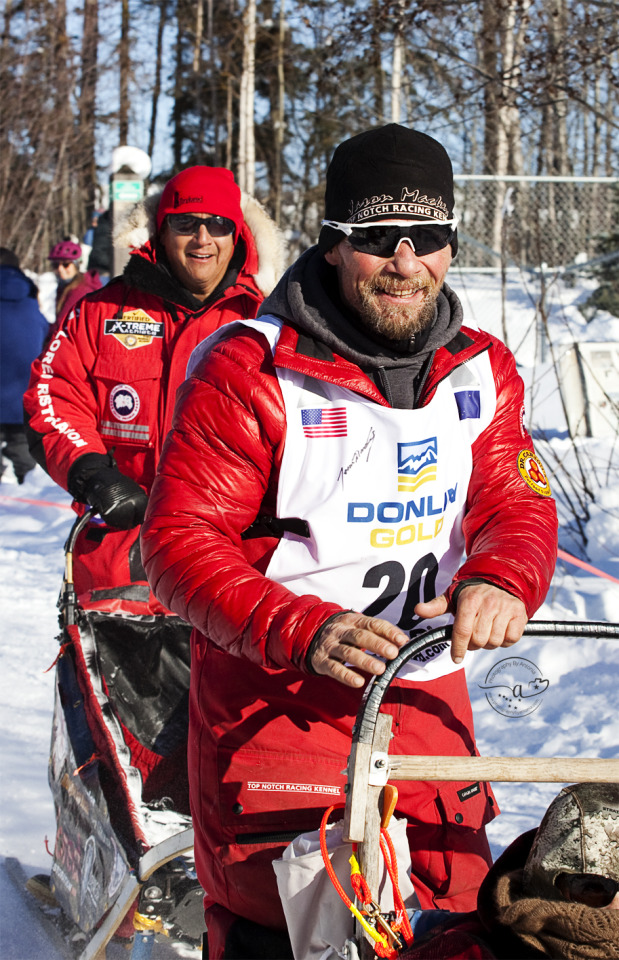
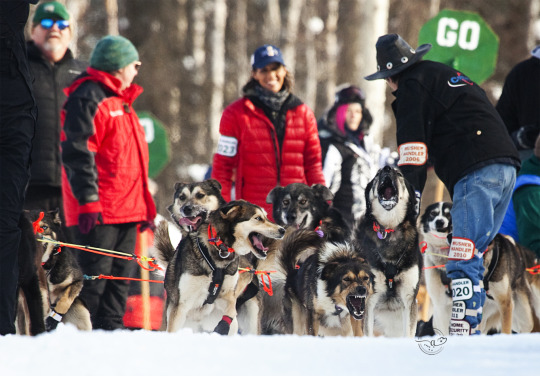

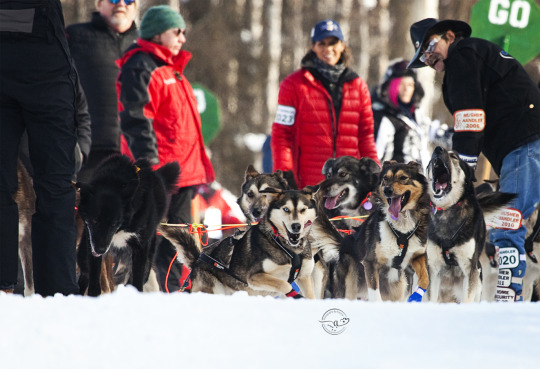

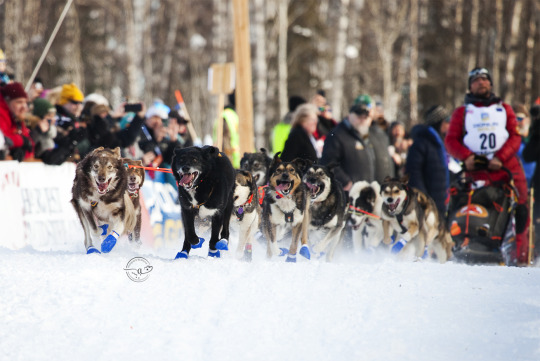
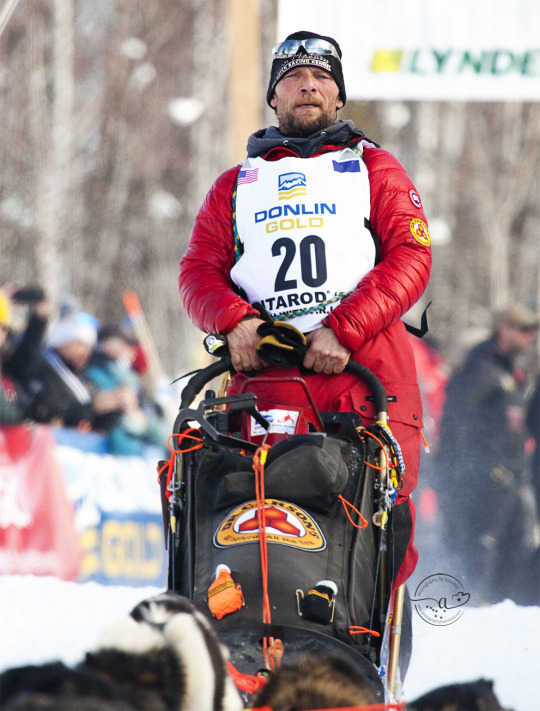
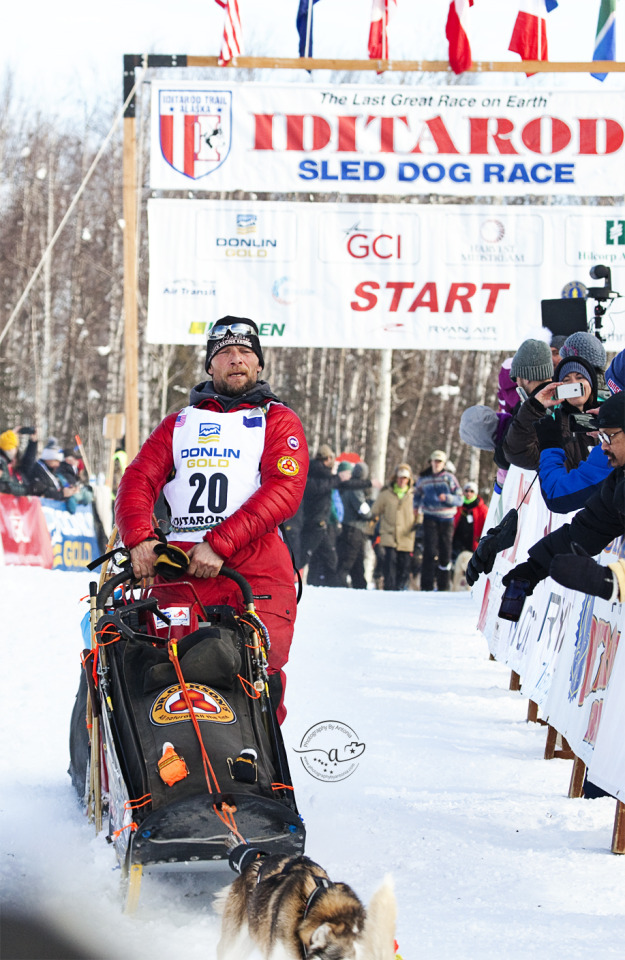
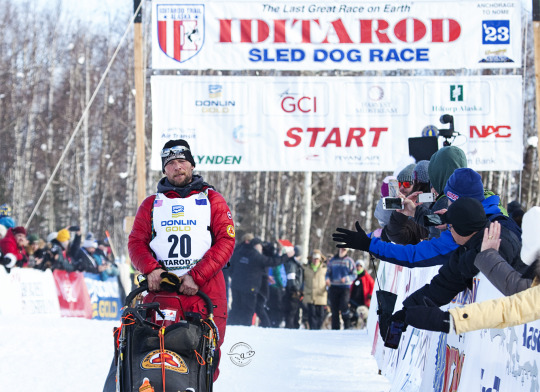
Jason Mackey and team at the Ceremonial and ReStart of Iditarod 51. Jason is the younger brother of 4-time Iditarod and Yukon Quest Champion Lance Mackey. Lance passed away in September of 2022 and Jason took his brother’s ashes onto this year’s Iditarod trail. Jason had a rough go throughout the race and was barely able to finish, but finish he did as RED LANTERN (last place). He was also voted as Most Inspirational by his fellow finishers.
#Jason Mackey#Mackey's Top Notch Racing Kennel#iditarod#iditarod 51#iditarod 2023#iditarod51#iditarod2023#mushing#sled dogs#yes I took these photos#mackey legacy#photography by antonia
11 notes
·
View notes
Text
Mushers heading to Willow, Alaska, for start of Iditarod | Fox News
WILLOW, Alaska – The relaxed atmosphere surrounding the world’s most famous sled dog race is about to become a memory.
Mushers were making their way to Willow, Alaska, on Sunday, for the competitive start of the Iditarod Trail Sled Dog Race.
In Willow, mushers make the final preparations for the nearly 1,000-mile (1,600-kilometer) race to Nome. This includes saying goodbye to friends and families and making the final checks of their sleds.
The winner is expected in Nome, along the Bering Sea coast, in about nine days.
On Saturday, thousands of people lined the streets for the shortened, fan-friendly ceremonial start in Anchorage.
The event is designed for fans, allowing them to interact with the mushers, take photos and pet some sled dogs.
The “ceremonial start is honestly the most fun day because you really get to show everyone, I mean, all of Anchorage and then plus everyone whose come here, your sport. And you get to show it with passion, which is so cool,” said Aliy Zirkle, a fan favorite who has four top-five finishes in the last four Iditarods.
“So running down Forth Avenue, 12 dogs, someone in your sled, it’s fun and it should be fun,” she said.
The event went forward despite a lack of snow in Anchorage this winter. Snow even had to be shipped this week to Anchorage from Fairbanks for the event. After all that, it snowed about an inch Friday.
The ceremonial start usually covers an 11-mile (17.7-kilometer) route, going along city streets and trails from downtown Anchorage to the east side of the city.
But the lack of snow forced organizers to shorten the race to a 3-mile (4.83-kilometer) route.
Race organizers said trail conditions will largely improve for mushers after the official start in Willow.
The mood changes Sunday from the party atmosphere of the ceremonial start, where beer tents popped up on downtown streets and reindeer dog vendors were selling to the crowds, Zirkle said.
“It’s a little more serious, kind of pull up your britches and get ready to race,” Zirkle said.
There are 85 mushers signed up this year for the race, which crosses long stretches of unforgiving terrain, including two mountain ranges and the wind-lashed Bering Sea coast.
There are seven former champions in the field, including Dallas Seavey. He has won three out of the last four races, and his only loss in that span was to his father, Mitch Seavey, in 2013.
Brent Sass, who finished second in this year’s 1,000-mile (1,600-kilometer) Yukon Quest International Sled Dog Race between Alaska and Canada, said it’s an incredibly talented field of mushers in the Iditarod and any one of them could be the favorite to win.
“I’m not even going to begin to mention them because there’s at least 20 teams that could win this race this year,” he said, including one of the eight mushers in the race from Norway.
Two-time champ Robert Sorlie, 58, is a firefighter in Oslo, Norway. In 2003, he became only the second man born outside the United States to win the race, a feat he repeated in 2005. He says this is likely his last Iditarod, citing age and costs associated with the race.
source http://allofbeer.com/2017/07/01/mushers-heading-to-willow-alaska-for-start-of-iditarod-fox-news/ from All of Beer http://allofbeer.blogspot.com/2017/06/mushers-heading-to-willow-alaska-for.html
0 notes
Text
Mushers heading to Willow, Alaska, for start of Iditarod | Fox News
WILLOW, Alaska – The relaxed atmosphere surrounding the world’s most famous sled dog race is about to become a memory.
Mushers were making their way to Willow, Alaska, on Sunday, for the competitive start of the Iditarod Trail Sled Dog Race.
In Willow, mushers make the final preparations for the nearly 1,000-mile (1,600-kilometer) race to Nome. This includes saying goodbye to friends and families and making the final checks of their sleds.
The winner is expected in Nome, along the Bering Sea coast, in about nine days.
On Saturday, thousands of people lined the streets for the shortened, fan-friendly ceremonial start in Anchorage.
The event is designed for fans, allowing them to interact with the mushers, take photos and pet some sled dogs.
The “ceremonial start is honestly the most fun day because you really get to show everyone, I mean, all of Anchorage and then plus everyone whose come here, your sport. And you get to show it with passion, which is so cool,” said Aliy Zirkle, a fan favorite who has four top-five finishes in the last four Iditarods.
“So running down Forth Avenue, 12 dogs, someone in your sled, it’s fun and it should be fun,” she said.
The event went forward despite a lack of snow in Anchorage this winter. Snow even had to be shipped this week to Anchorage from Fairbanks for the event. After all that, it snowed about an inch Friday.
The ceremonial start usually covers an 11-mile (17.7-kilometer) route, going along city streets and trails from downtown Anchorage to the east side of the city.
But the lack of snow forced organizers to shorten the race to a 3-mile (4.83-kilometer) route.
Race organizers said trail conditions will largely improve for mushers after the official start in Willow.
The mood changes Sunday from the party atmosphere of the ceremonial start, where beer tents popped up on downtown streets and reindeer dog vendors were selling to the crowds, Zirkle said.
“It’s a little more serious, kind of pull up your britches and get ready to race,” Zirkle said.
There are 85 mushers signed up this year for the race, which crosses long stretches of unforgiving terrain, including two mountain ranges and the wind-lashed Bering Sea coast.
There are seven former champions in the field, including Dallas Seavey. He has won three out of the last four races, and his only loss in that span was to his father, Mitch Seavey, in 2013.
Brent Sass, who finished second in this year’s 1,000-mile (1,600-kilometer) Yukon Quest International Sled Dog Race between Alaska and Canada, said it’s an incredibly talented field of mushers in the Iditarod and any one of them could be the favorite to win.
“I’m not even going to begin to mention them because there’s at least 20 teams that could win this race this year,” he said, including one of the eight mushers in the race from Norway.
Two-time champ Robert Sorlie, 58, is a firefighter in Oslo, Norway. In 2003, he became only the second man born outside the United States to win the race, a feat he repeated in 2005. He says this is likely his last Iditarod, citing age and costs associated with the race.
from All Of Beer http://allofbeer.com/2017/07/01/mushers-heading-to-willow-alaska-for-start-of-iditarod-fox-news/ from All of Beer https://allofbeercom.tumblr.com/post/162454582152
0 notes
Text
Iditapod: Zirkle first to halfway. Plus: injuries, wildlife, and litter names.
Ed Hopkins: He thought he did a lot of rough and rowdy things in his day, and I was thinking about it as I was bouncing through the burn, thinking, well, Richie ain’t seen nothing yet
[theme music plays]
Casey Grove: Welcome to the Iditapod, it’s a podcast about laughing in the face of danger all the way down the Iditarod trail. We cover the race as well. The Iditapod is a production of Alaska Public Media and KNOM radio in Nome. I’m your host, Casey Grove, and before we have too much fun here, how about a word from our sponsor.
[ad plays]
CG: Yes, that was Ed Hopkins from Canada’s Yukon Territory off the top there, he has a great laugh. And, a great mustache. We’re gonna hear more from him later about temperatures warmer than he’s used to, and animal encounters on the trail, which he is familiar. But first, this race is shaping up. It’s Thursday, and Aliy Zirkle has taken the lead after pushing past other mushers who are resting in Takotna and Ophir, onto the old mining town checkpoint of Iditarod. It’s actually a ghost town, nobody lives there. Aliy says she’s never spent her 24 hour layover there, and she wins the Dorothy G. Page award, $3,000 in gold nuggets for being the first to Iditarod. I think they offered her a gold iPhone, the newest one, either that or the $3,000 in gold nuggets, I’m guessing she took the nuggets but I guess we will find out later. Anyways, Aliy’s SP Kennel team, all 14 dogs, pulled into the checkpoint around 1:15 am Thursday morning, starting their 24 hour rest in the lead. That’s going to change some time today though, I would expect, Zirkle’s competition started to come off of their mandatory 24 hour rests already. In Takotna, where our trail reporter Zachariah Hughes was at the time, defending champion Joar Leifseth Ulsom pulled out a couple minutes before 8pm Wednesday night, with 13 dogs.
Unidentified Woman: You can leave anytime.
Joar Leifseth Ulsom: Alright. Thank you guys for all the help
CG: And a wave of front pack mushers followed Ulsom in the hours after. Not far ahead, a group of another group that had pushed onto the Ophir checkpoint, that includes Girdwoods’ Nicolas Petit, they also began making that 80 mile leg to Iditarod. That run has appeared to be a slog. Zirkle and Martin Buser spent much of the day pushing to get there before declaring their 24s. Zirkle’s average moving pace was a little slow, as was Buser’s, and that suggests that the trail was challenging and slow. I saw a video of Buser going through Takotna and there was light snow falling, and that can lead to a little slower going on the trail. What’s more, it’s been warm around the three Yukon River communities that mushers will hit after Iditarod. Race judge and past Iditarod finisher Karin Hendrickson says that caused some drop bags in Shageluk to thaw.
Karin Hendrickson: So, that can affect the meat. Um, and we just let the know in case they want to change up their plans a bit, or maybe haul some extra meat out of Iditarod, just trying to adapt and have the information that they need.
CG: The trail between Iditarod and Shageluk is slow and hilly, meaning any extra supplies that the mushers pack under their sleds will weigh them down even more. It’s not uncommon for drop bags to thaw, but it increases the risk that a team could get spoiled meat. Nobody wants that. Mushers who plan to take their mandatory 8 hour rest in Shageluk, might push 20 miles upriver to the checkpoint in Anvik to avoid that. Back up the trail, a lot of Iditarod mushers opted to take their 24 in Takotna, known for its pies. That pause, for a full 24 hours, it allows some of the stories from the trail to trickle out. Whether, as we’re going to hear from Alaska Public Media’s Zachariah Hughes, their stories about animal encounters, sled malfunctions, or late night injuries.
Zachariah Hughes: Between here and the run from Nikolai, Richie Diehl got… walloped.
Richie Diehl: I was looking off the side of the trail, like a 45 to the trail, out of the corner of my eye I noticed a little reflection off the side of my eye, I turned my head there was a tree with a reflector on it. It hit me. I flew off the sled, and um, next thing I knew I was on a desperate chasing the sled down, and I dove and caught the sled, and then suddenly I was standing the middle of the dogs and they were all staring at me, and there was blood everywhere. I initially thought I had knocked out all my front teeth.
ZH: Once back on his sled runners, he could tell it was a serious wound, and he cleaned it with toilet paper and wet wipes as he continued on. In Nikolai that morning, folks brought him to the clinic for butterfly stitches. But it’s not throwing much of a kink into Diehl’s race. He can see fine, is taking care of the wound, and plans to continue on as normal at a competitive pace. Not far from his team, is Ed Hopkins, technically an Iditarod rookie, but a seasoned veteran of the Yukon Quest.
Ed Hopkins: I underestimated, I thought I had it figured out, but obviously I didn’t do enough homework.
ZH: Hopkins says it’s the midday heat, timing runs to avoid it, that’s the biggest curveball for his team and race strategy.
EH: I mean, I know how to run in really cold weather and things like that, and I’m doing it for a long time you know, but this is new to me.
ZH: The other major hiccup was the state of the Buffalo Tunnels, a rough ride over tussocks and frozen soil, with barely any snow to cover the bumps. Hopkins didn’t see the bison in the area, just massive signs that they’d been around. Moose, however, he did see. And, so did Jeff King.
Jeff King: You know, I’ve lived in Alaska 40 years, and I still get that close to a moose, and some of them, you just can’t help but be like oh my god, it’s just like a dinosaur, it’s so huge! And these both were just enormous! I mean, good LORD they’re huge. Like a clydesdale horse!
ZH: King had two separate encounters, but made it out of both unscathed. Not without excitement though.
JK: He thought we were chasing them and we ran, I saw his hackles go up, and he’s like okay I’m in for a fight. And I, I encouraged the dogs to go fast, because it was clear he thought we were chasing him, and so the moose is thinking ‘you’re chasing me’ and I really wanted to outrun him. And it wasn’t until we kind of got in front of him, we were winning the sprint.
ZH: As King is talking, he’s swapping out the runner plastic on his sled. He’s mounting wide, white strips, about the width of a palm, that will hopefully help him stay floating on top of the new, fresh snow during the upcoming sections of trail. A bit like replacing normal cross-country skis with wide, backcountry ones. Though, the trail was hard and fast for early stretches of the race heading up into the Alaska Range, it’s slowed down in the last day on the way into the interior. It’s not clear how much of a role the good trail conditions are playing in one novel element of this years race. As of Wednesday afternoon, only one musher had scratched: Shaynee Traska, in Nikolai. Bruce Lee works for the Iditarod Insider, and is a race veteran, and he says he doesn’t recall a single race with just a single scratch this far into competition.
Bruce Lee: Which speaks pretty highly to the caliber of dogs people are raising now, and the knowledge that previous mushers have passed on to rookies about feeding, and equipment. That’s a pretty successful race to get here and not have a scratch.
ZH: Competitors this year are also more closely bunched together than in prior years, but after front of the pack mushers come off their 24 hour rests, the race starts to speed up. In Takotna, I’m Zachariah Hughes.
Casey Grove: Well, we’ve heard from Ed Hopkins a couple times now, and we will have head thrice now to answer today’s listener question. That comes to us from Ed’s homeland, that’s Canada, but a little further south than his and Michelle Phillips Taggish Lake kennel is located.
Lisa Hale: Hi Iditapod crew, this is Lisa Hale in Vancouver. Like many people, I’ve been brought into the mushing world by Blair Braverman and her Ugly Dogs. My question is this: I’ve heard that moose are really dangerous and can even attack sled dogs. What strategies do mushers use if they run into a moose on the trail? Thanks a lot!
CG: Thanks for the great question Lisa, and for the shoutout to all the fans of the Ugly Dogs and Blair Braverman listening to the Iditapod, we appreciate y’all coming along with us. We posted an interview with Quince Mountain from Skwentna, recorded on Wednesday. He is out there, on the trail, struggling with a snow machine but it sounds like they got some things sorted out. So, this question about animal encounters along the trail - it’s something that comes up not only just when the mushers are training, but also during the Iditarod, pretty regularly. Last year, there was a story about Marcelle Fressineau chasing a bison off the trail with her axe, or at least wielding an axe to protect herself as needed. And, you know, they see moose out there and other animals, and this is where Ed is going to come back in. Zach asked Ed about this very question.
Zachariah Hughes: I mean, out where you guys are, in Taggish, do you see moose on the trail ever?
Ed Hopkins: Yeah, moose and lots of caribou.
ZH: For a moose or a caribou, with a team like yours, do you just let them pass and hope that the dogs quiet down? Or do you try and get out in front of it and scare it off?
EH: Well, the caribou are different because they can just run through the trees and they’ll run out on the trail in front of you or behind you, and your dogs just kind of look but they’ll keep on going straight. But the moose on this side of the border, they seem to be a little bit more aggressive. I’ve had a couple of moose that just cross the trail, but they just stop right there. And I would just, okay, what are you gonna do. Because I’m not stopping. And I would just yell and scream and the dogs would start barking, they all start barking like crazy. And I think that’s what scared them off. You know, if one or two bark, maybe they would come at em, but they all just bellowed at him and he just took right off, both of em.
ZH: That was on this trail? Or was that earlier? EH: That was on this trail, this was going between, after… after the burn, going into Nikolai.
ZH: Big bull moose, or cows?
EH: Eh, like a three year old bull, couple of three year old bulls.
ZH: You seem unfazed by it.
EH: No, I mean, I have bigger bulls that run around my place, I mean, I got some air horns and other kinds of gadgets in here I could have used if I wanted.
Casey Grove: But I guess Ed didn’t need that air horn, thankfully. It’s always an interesting thing to hear about the animal encounters. Something I’ve always been interested in and something you ask the mushers about as a reporter, is sort of this quirky thing about the dog mushing world. That’s when a new litter of puppies is born, often times there will be a theme to the name their given. For example, Nic Petit has dogs from a litter named after champion Iditarod mushers. Libby, for example, is short for Libby Riddles, the first woman to win the race. This is a topic, the naming of different litters and using different themes, that Zach is really delighted by as well. And in Takotna, he recently found his new, favorite examples.
ZH: I like littera names because they’re usually funny and sometimes, kind of self referential and creative. A friend of mine in Nome had a litter named after cuts of beef - so, Ribeye, Flank, and Brisket. Another set of his dogs had weather themed names, like Rainy, Windy, and Flood. It’s a lot more elemental. Rookie Blair Braverman, who’s a writer, has a set of dogs named after famous authors. So, Hunter S. Thompson, Gay Talese, and James Baldwin, those are some of the. Another litter she has is named after characters from Buffy the Vampire Slayer, a beloved movie and TV series from the 90s. But I have to say, so far, my favorite theme is Matt Failor’s heavy metal litter.
Matt Failor: This is Iron Maiden, this is Pink Floyd, Panterra, Led Zeppelin, and Ronnie James Dio. And, um, those are the heavy metal bands. And then my buddy, Michael Baker, who’s running our two year old/B-team, he has the hair metal, the glam rock. David Bowie, Billy Idol, um -
ZH: Twisted Sister?
MF: Twisted Sister, did you meet them already?
ZH: No, I’m just guessing. Is Whitesnake in there?
MF: We had a Whitesnake, we turned her into a pet dog, she wasn’t really enjoying the thousand mile perspective so she’s a pet dog in Michigan. And then, I can’t think of the other names - oh, Van Halen, Motley Crue. And Bon Jovi. Yeah. Gotta love the 80s.
ZH: The hair metal theme’s cute, kind of kitschy, but I think the idea of naming a bunch of sled dogs after heavy metal bands, like Panterra, is funny.
[“Raining Blood” by Slayer begins playing]
ZH: Because, the style of music, that heavy, sludgy, doomy whole genre, is like the complete opposite of mushing in the middle of wilderness. But, if that’s the excuse you need to yell out things like “GEE Iron Maiden”, or “HAW Twisted Sister”, then I’m for it.
[“Raining Blood” shifts into a banjo cover by Rob Scallon]
Casey Grove: Whooooaaaa! Slayer! That is the song “Raining Blood” off of Slayer’s album “Reign in Blood”, released in 1986. Zach is going out on. I’m going out on the same song, by Rob Scallon, that’s a banjo cover of “Raining Blood”. Our usual theme music is by the band Sassafrass, they were off the top. But that’s not what’s happening today, this is happening today.
[banjo gets louder]
CG: Well, folks, that’s all the time we have today. We will be back tomorrow with another episode of the Iditipod. Until then, happy trails.
[banjo increases in volume]
0 notes
Text
Mushers heading to Willow, Alaska, for start of Iditarod | Fox News
WILLOW, Alaska – The relaxed atmosphere surrounding the world’s most famous sled dog race is about to become a memory.
Mushers were making their way to Willow, Alaska, on Sunday, for the competitive start of the Iditarod Trail Sled Dog Race.
In Willow, mushers make the final preparations for the nearly 1,000-mile (1,600-kilometer) race to Nome. This includes saying goodbye to friends and families and making the final checks of their sleds.
The winner is expected in Nome, along the Bering Sea coast, in about nine days.
On Saturday, thousands of people lined the streets for the shortened, fan-friendly ceremonial start in Anchorage.
The event is designed for fans, allowing them to interact with the mushers, take photos and pet some sled dogs.
The “ceremonial start is honestly the most fun day because you really get to show everyone, I mean, all of Anchorage and then plus everyone whose come here, your sport. And you get to show it with passion, which is so cool,” said Aliy Zirkle, a fan favorite who has four top-five finishes in the last four Iditarods.
“So running down Forth Avenue, 12 dogs, someone in your sled, it’s fun and it should be fun,” she said.
The event went forward despite a lack of snow in Anchorage this winter. Snow even had to be shipped this week to Anchorage from Fairbanks for the event. After all that, it snowed about an inch Friday.
The ceremonial start usually covers an 11-mile (17.7-kilometer) route, going along city streets and trails from downtown Anchorage to the east side of the city.
But the lack of snow forced organizers to shorten the race to a 3-mile (4.83-kilometer) route.
Race organizers said trail conditions will largely improve for mushers after the official start in Willow.
The mood changes Sunday from the party atmosphere of the ceremonial start, where beer tents popped up on downtown streets and reindeer dog vendors were selling to the crowds, Zirkle said.
“It’s a little more serious, kind of pull up your britches and get ready to race,” Zirkle said.
There are 85 mushers signed up this year for the race, which crosses long stretches of unforgiving terrain, including two mountain ranges and the wind-lashed Bering Sea coast.
There are seven former champions in the field, including Dallas Seavey. He has won three out of the last four races, and his only loss in that span was to his father, Mitch Seavey, in 2013.
Brent Sass, who finished second in this year’s 1,000-mile (1,600-kilometer) Yukon Quest International Sled Dog Race between Alaska and Canada, said it’s an incredibly talented field of mushers in the Iditarod and any one of them could be the favorite to win.
“I’m not even going to begin to mention them because there’s at least 20 teams that could win this race this year,” he said, including one of the eight mushers in the race from Norway.
Two-time champ Robert Sorlie, 58, is a firefighter in Oslo, Norway. In 2003, he became only the second man born outside the United States to win the race, a feat he repeated in 2005. He says this is likely his last Iditarod, citing age and costs associated with the race.
from All Of Beer http://allofbeer.com/2017/07/01/mushers-heading-to-willow-alaska-for-start-of-iditarod-fox-news/
0 notes
Text
Mushers heading to Willow, Alaska, for start of Iditarod | Fox News
WILLOW, Alaska – The relaxed atmosphere surrounding the world’s most famous sled dog race is about to become a memory.
Mushers were making their way to Willow, Alaska, on Sunday, for the competitive start of the Iditarod Trail Sled Dog Race.
In Willow, mushers make the final preparations for the nearly 1,000-mile (1,600-kilometer) race to Nome. This includes saying goodbye to friends and families and making the final checks of their sleds.
The winner is expected in Nome, along the Bering Sea coast, in about nine days.
On Saturday, thousands of people lined the streets for the shortened, fan-friendly ceremonial start in Anchorage.
The event is designed for fans, allowing them to interact with the mushers, take photos and pet some sled dogs.
The “ceremonial start is honestly the most fun day because you really get to show everyone, I mean, all of Anchorage and then plus everyone whose come here, your sport. And you get to show it with passion, which is so cool,” said Aliy Zirkle, a fan favorite who has four top-five finishes in the last four Iditarods.
“So running down Forth Avenue, 12 dogs, someone in your sled, it’s fun and it should be fun,” she said.
The event went forward despite a lack of snow in Anchorage this winter. Snow even had to be shipped this week to Anchorage from Fairbanks for the event. After all that, it snowed about an inch Friday.
The ceremonial start usually covers an 11-mile (17.7-kilometer) route, going along city streets and trails from downtown Anchorage to the east side of the city.
But the lack of snow forced organizers to shorten the race to a 3-mile (4.83-kilometer) route.
Race organizers said trail conditions will largely improve for mushers after the official start in Willow.
The mood changes Sunday from the party atmosphere of the ceremonial start, where beer tents popped up on downtown streets and reindeer dog vendors were selling to the crowds, Zirkle said.
“It’s a little more serious, kind of pull up your britches and get ready to race,” Zirkle said.
There are 85 mushers signed up this year for the race, which crosses long stretches of unforgiving terrain, including two mountain ranges and the wind-lashed Bering Sea coast.
There are seven former champions in the field, including Dallas Seavey. He has won three out of the last four races, and his only loss in that span was to his father, Mitch Seavey, in 2013.
Brent Sass, who finished second in this year’s 1,000-mile (1,600-kilometer) Yukon Quest International Sled Dog Race between Alaska and Canada, said it’s an incredibly talented field of mushers in the Iditarod and any one of them could be the favorite to win.
“I’m not even going to begin to mention them because there’s at least 20 teams that could win this race this year,” he said, including one of the eight mushers in the race from Norway.
Two-time champ Robert Sorlie, 58, is a firefighter in Oslo, Norway. In 2003, he became only the second man born outside the United States to win the race, a feat he repeated in 2005. He says this is likely his last Iditarod, citing age and costs associated with the race.
Source: http://allofbeer.com/2017/07/01/mushers-heading-to-willow-alaska-for-start-of-iditarod-fox-news/
from All of Beer https://allofbeer.wordpress.com/2017/07/01/mushers-heading-to-willow-alaska-for-start-of-iditarod-fox-news/
0 notes
Photo

| Matt Hall, 2017 Yukon Quest champion
by Scott Chesney
2 notes
·
View notes
Link
Famed musher Hugh Neff gives credit where credit is due when it comes to the true champions of his sport – the dogs. “One of my pet peeves is there’s always a lot of attention given to the human mushers and not enough said about the dogs,” said Neff. Neff grew up in Chicago, but now calls Tok, Alaska home. He has won the 1,000-mile Yukon Quest dogsled race twice (the toughest in the sport), competed in the ...
0 notes
Photo
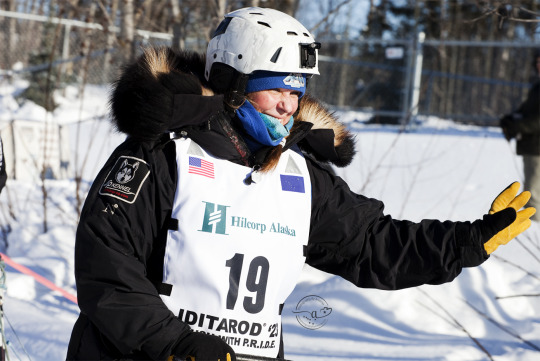
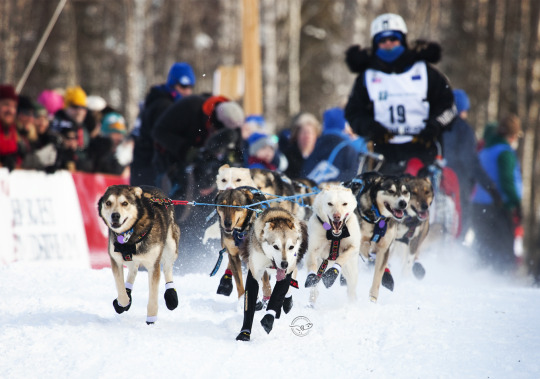
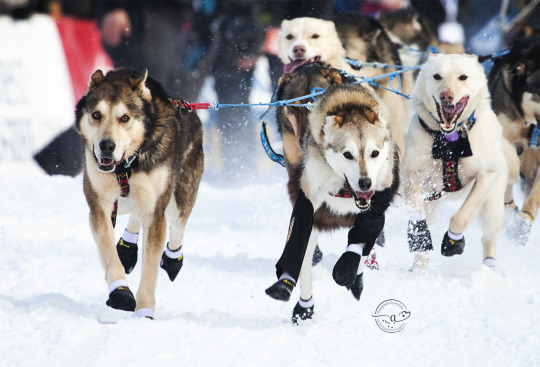
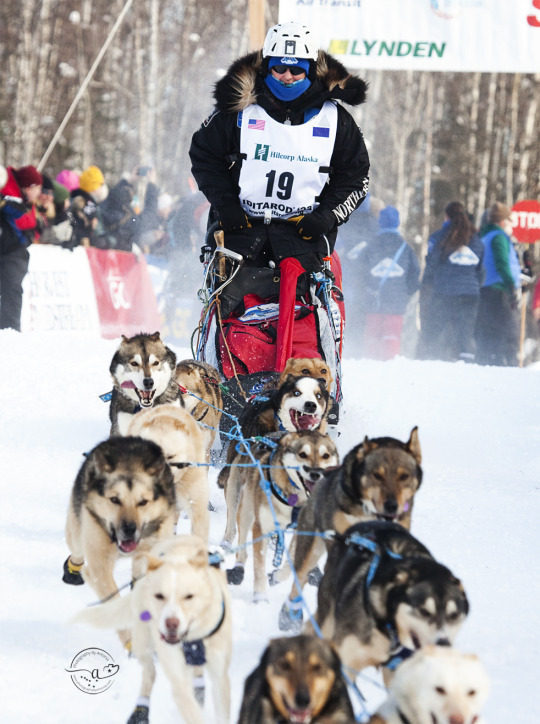
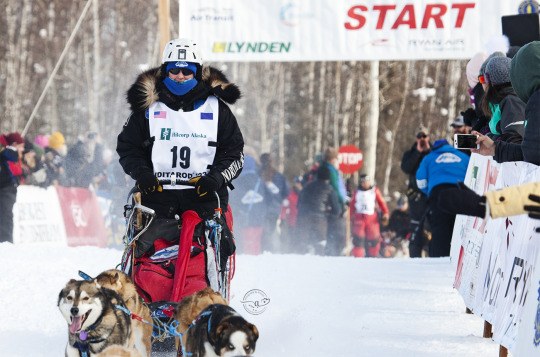
Second year Rookie Bridgett Watkins at the Ceremonial and Restart of Iditarod 51. Watkins is the daughter of Yukon Quest Champion Allen Moore and stepdaughter of Yukon Quest Champion Aliy Zirkle. The ER Nurse ran her first Iditarod in 2022 and was caught in the nasty windstorm in the Topkok Hills out of White Mountain. Watkins ended up breaking her collar bone and forced to scratch. She wears a helmet because she’s ended up with a concussion while running dogs and wants to promote head safety. Watkins returned to the race to finish and finish she did.
#bridgett watkins#kennel on the hill#iditarod#iditarod 51#iditarod 2023#redemption#iditarod51#iditarod2023#mushing#dog mushing#dog sledding#mush#alaska sports#dog sports#winter sports#dog photography#sports photography#sport photography#yes I took these photos#photography by antonia
2 notes
·
View notes